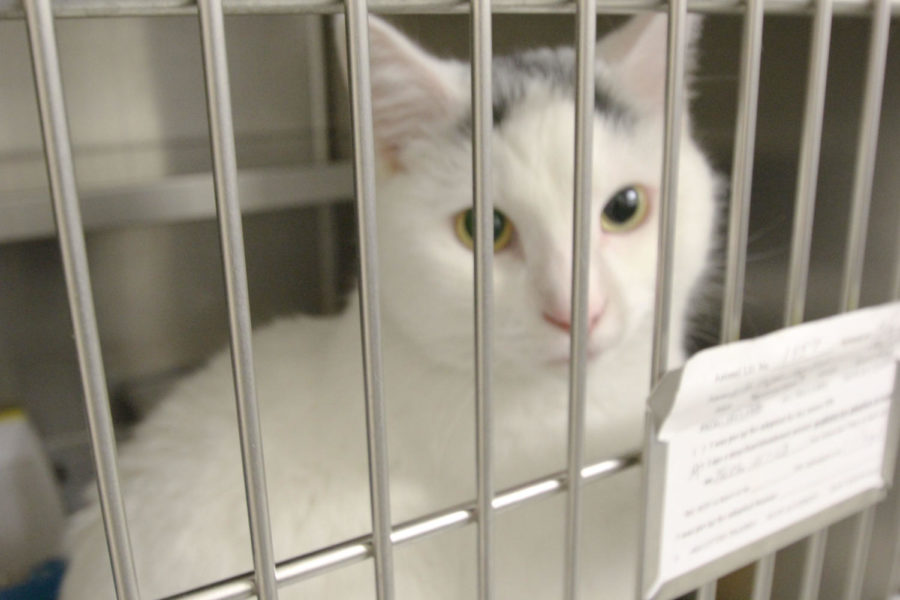Students impact Ames Animal Shelter through volunteering, adopting
January 17, 2013
The lifestyle of a college student involves constant on-the-go behavior. Throwing a pet into the mix could cause problems for the student, the pet and the Ames Animal shelter if all aspects of pet care are not considered.
Lorna Lavender, shelter supervisor of the Ames Animal Shelter, said students have a negative and positive impact on the shelter; it just depends on the situation and the student.
“We don’t have data that points to students causing more animal problems in a community than anybody else,” Lavender said. “I do see more impulsiveness and emotional decision making with younger clients.”
Does that mean every student is impulsive? It depends on the student and his or her actions with pets that determine if they are helping the community or not.
Lavender proposed five questions for students to ask before getting a pet to see if they are ready for the responsibility:
“Can you have it where you live? Can you, in the case of a dog, train it, spend time with it, and change your lifestyle? [Are you willing to] learn and educate yourself about the animal? What are reasonable veterinarian costs, and what can you afford? Is [a pet] in your budget?”
Another cost to consider is spaying and neutering.
Erica Bauer, a registered veterinary technician and adopter of two cats from the Ames Animal Shelter, said spaying and neutering your pets is one of the best things for health and elimination of unwanted animals.
“From a health standpoint spaying and neutering actually decreases the risk for cancer,” Bauer said. “It reduces the risk for mammary and uterine cancer in female dogs and testicular cancer in males.”
Lavender agreed, “I think one of the most important things that we can do as pet-owners … is to spay and neuter our pets so exponentially they don’t contribute to … 1,000 homeless pets out of that one.”
Pets need constant care: food, time, attention, training, etc. The factor that overpowers the rest is responsibility to the commitment.
“Animals require a lifetime commitment,” Lavender said. “It is not the ones that are loved the most, it’s the ones that are understood and provided best for that are the happiest.”
Iowa State students also provide the Ames Animal Shelter with volunteers. Around 40 to 70 people visit the shelter per day. About 40 of them are active student volunteers.
“Shelter medicine students from the vet college, they are out here on a externship program every Friday to learn,” Lavender said.
Around 20,000 cats and dogs have gone into the Ames Animal Shelter in the past 20 years. Over the years, the shelter has built up to a 90 percent adoption/return rate.
“Public health students from the vet school come out to learn and tour and talk about the impact of stray animals and how that can affect the health of the human population,” Lavender said.
The Ames Animal Shelter has found that the students of the community have helped more than burdened the process at the shelter.
“I’m kind of excited about continuing to work with the students in getting more humane responsible human-animal bonds from that pool of population,” Lavender said.







